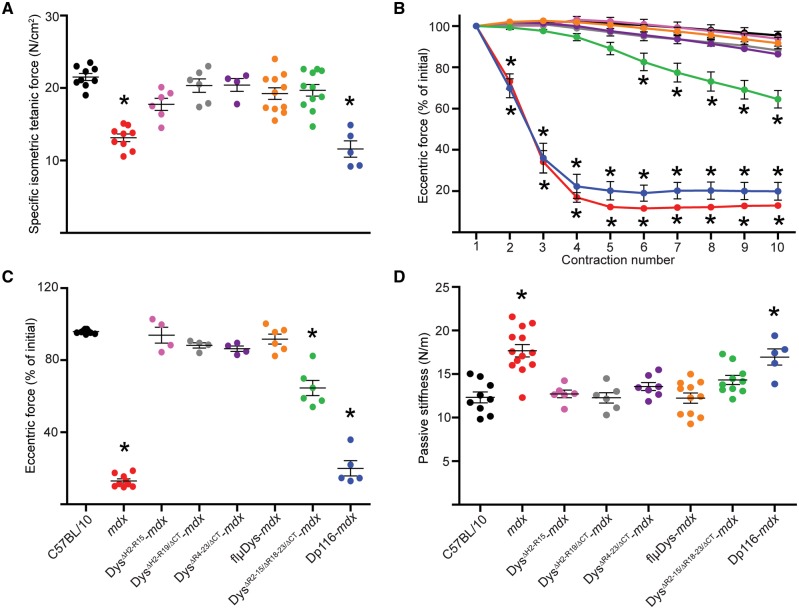Figure 5.
Effect of mini- and micro-dystrophin expression on eccentric contraction-induced force drop in isolated EDL muscles. (A) mdx and Dp116-mdx muscles generated lower specific isometric tetanic force compared to C57BL/10 and all mini- and micro-dystrophin constructs (one-way ANOVA; P<0.001). (B) mdx and Dp116-mdx had significantly greater eccentric force losses compared to C57BL/10 and all mini- and micro-dystrophin constructs. DysΔR2–15/ΔR18–23/ΔCT-mdx had an intermediate eccentric force loss that was significantly different from C57BL/10 from contractions 6 through 10. The interaction between contraction number and genotype was significant by two-way ANOVA (interaction P<0.001). (C) Final eccentric force at contraction 10 as a percentage of contraction 1 for each mouse line (one-way ANOVA; P<0.001). (D) mdx and Dp116-mdx muscles had significantly higher passive stiffness compared to C57BL/10 and all mini- and micro-dystrophin constructs (one-way ANOVA; P<0.001). Both one-way and two-way ANOVAs used Bonferroni post-hoc t-tests to confirm individual differences with post-hoc P<0.05 considered significant. *Statistically different from C57BL/10. Error bars are mean±SEM. The symbol color-to-genotype scheme in Figure 5C and D was also utilized for Figure 5A and B.

